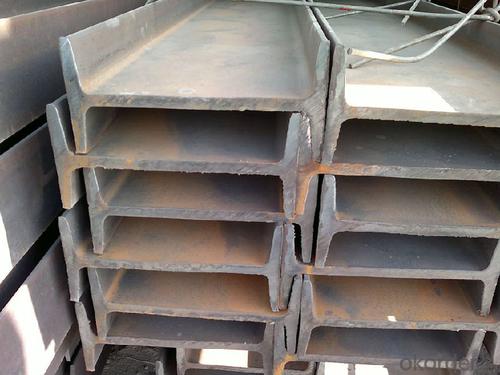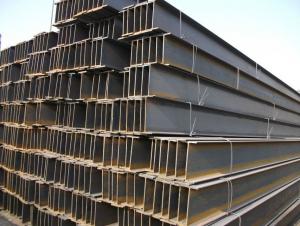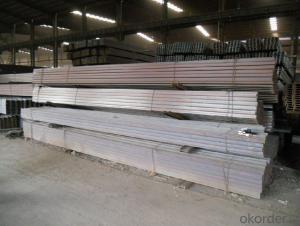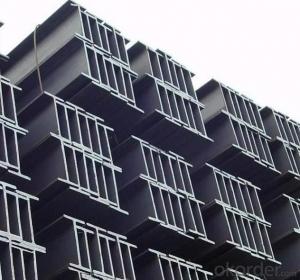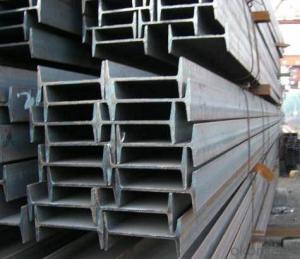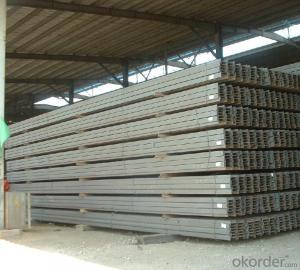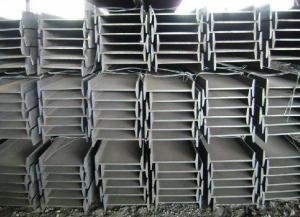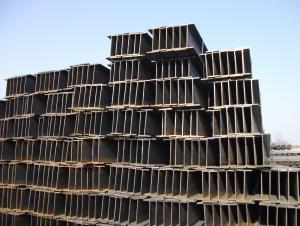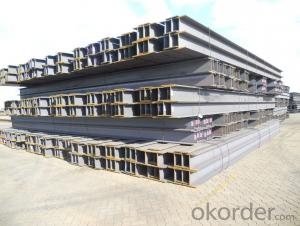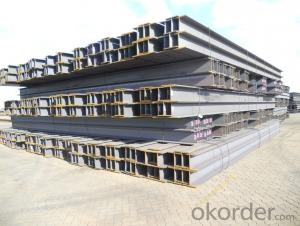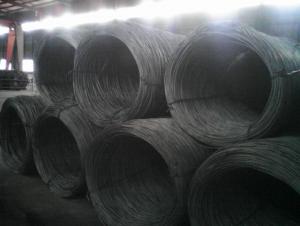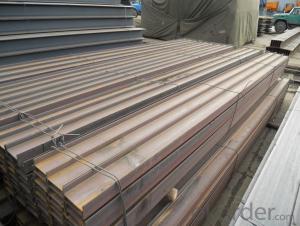European Standard IPE200 Steel High Quality
- Loading Port:
- China main port
- Payment Terms:
- TT OR LC
- Min Order Qty:
- 50 m.t.
- Supply Capability:
- 10000 m.t./month
OKorder Service Pledge
OKorder Financial Service
You Might Also Like
Specification
European Standard IPE200 with High Quality
Product Description:
Specifications
1.Standard: EN10025
2.Material: S235JR or Equivalent
3.Length: 6m, 12m
4.Size:
Size (mm) | Mass (kg/m) |
200*100*5.6 | 22.4 |
Usage & Applications
Commercial building structure;
Pre-engineered buildings;
Machinery support structures;
Prefabricated structure;
Medium scale bridges.
Packaging & Delivery
1. Transportation: the goods are delivered by truck from mill to loading port, the maximum quantity can be loaded is around 40MTs by each truck. If the order quantity cannot reach the full truck loaded, the transportation cost per ton will be little higher than full load.
2. With bundles and load in 20 feet/40 feet container, or by bulk cargo, also we could do as customer's request.
3. Marks:
Color mark: There will be color marking on both end of the bundle for the cargo delivered by bulk vessel. That makes it easily to distinguish at the destination port.
Tag mark: There will be tag mark tied up on the bundles. The information usually including supplier logo and name, product name, made in China, shipping marks and other information request by the customer.
If loading by container the marking is not needed, but we will prepare it as customer's request.
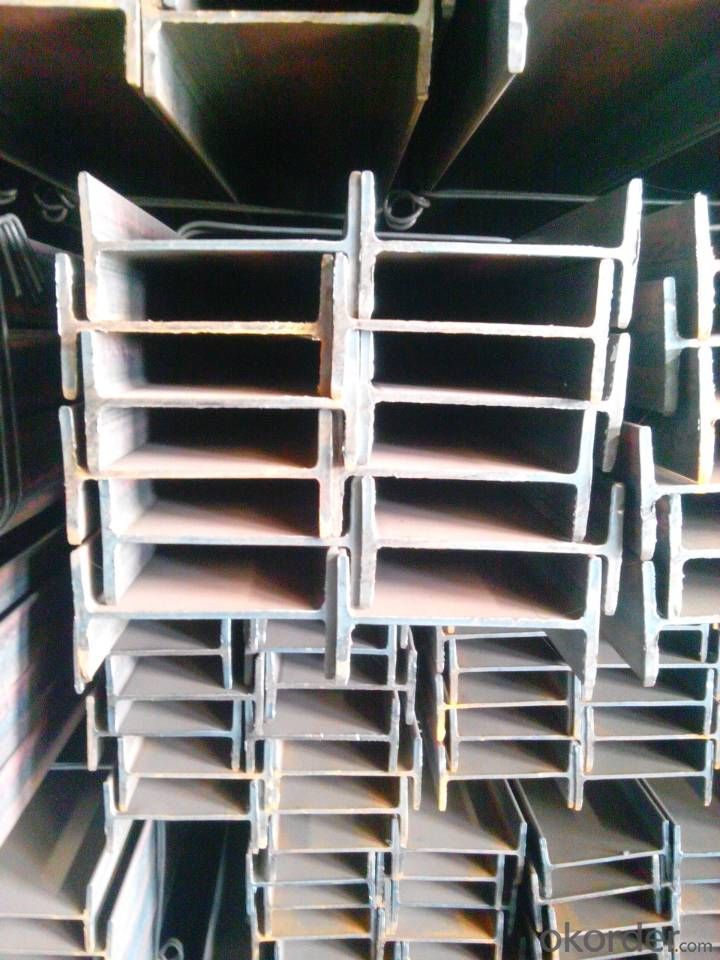
- Q: How do steel H-beams contribute to the overall functionality of a building?
- Steel H-beams play a crucial role in the overall functionality of a building by providing structural support and stability. These beams are designed to withstand heavy loads and distribute weight evenly across the building's framework. One of the main contributions of steel H-beams is their ability to span long distances without the need for intermediate support columns. This allows for open, flexible floor plans and eliminates the need for excessive interior columns, maximizing usable space within the building. Furthermore, steel H-beams have excellent load-bearing capacity, making them ideal for supporting multi-story structures. The beams can withstand various external forces such as wind, earthquakes, and heavy snow loads, ensuring the building's stability and safety. Steel H-beams also contribute to the overall functionality of a building by allowing for efficient construction. Due to their standardized shape and size, these beams can be easily manufactured and transported to the construction site. Additionally, their lightweight nature reduces the overall weight of the building, leading to cost savings in foundation and construction materials. Moreover, steel H-beams are highly durable and resistant to corrosion, making them a long-lasting structural component. This durability ensures the longevity of the building and reduces the need for frequent maintenance or repairs. In summary, steel H-beams contribute significantly to the overall functionality of a building by providing structural support, stability, and flexibility in design. Their ability to withstand heavy loads, span long distances, and resist external forces enhances the safety, efficiency, and longevity of the structure.
- Q: How do steel H-beams perform in coastal areas?
- Steel H-beams are generally a durable and reliable choice for construction in coastal areas. The coastal environment typically presents challenges such as high humidity, saltwater exposure, and strong winds, which can accelerate corrosion and structural degradation. However, steel H-beams are designed to withstand these conditions. One of the key advantages of steel H-beams in coastal areas is their excellent corrosion resistance. Most steel H-beams are made from carbon steel with a protective coating, such as galvanization or epoxy paint. These coatings form a barrier that prevents moisture and saltwater from reaching the underlying steel and causing corrosion. Additionally, the structural design of H-beams, with their wide flanges and deep web, provides excellent strength and stability against the forces of wind and waves. Moreover, steel H-beams have a long lifespan and require minimal maintenance in coastal areas. The protective coatings, combined with the inherent strength of steel, ensure that these beams can withstand the harsh coastal environment for many years without significant deterioration. Regular inspection and maintenance of the coatings can further extend their lifespan. However, it is important to note that the performance of steel H-beams in coastal areas can still be influenced by various factors. The specific location, proximity to the shoreline, exposure to salt spray, and prevailing wind conditions can all impact the performance and longevity of steel H-beams. Therefore, it is crucial to consult with structural engineers and adhere to proper design and construction practices to ensure the optimal performance of steel H-beams in coastal areas.
- Q: Can steel H-beams be used in healthcare or hospital construction?
- Steel H-beams have the ability to be utilized in healthcare or hospital construction. These beams are frequently employed in construction due to their robustness, longevity, and adaptability. They provide support for structures, enabling the creation of expansive areas, which is crucial in healthcare facilities for accommodating diverse medical equipment and ensuring smooth operations. Moreover, steel H-beams possess fire-resistant qualities, making them a secure option for constructing hospitals. They have the capacity to endure significant levels of stress and load, guaranteeing the building's structural integrity. All in all, steel H-beams are a fitting choice for healthcare or hospital construction due to their myriad advantages and suitability for establishing secure and efficient medical facilities.
- Q: What are the materials of H steel?
- The main material of H steel is Q235B, Q345B and so on.
- Q: Can steel H-beams be used for supporting outdoor signage or billboards?
- Yes, steel H-beams can be used for supporting outdoor signage or billboards. Steel H-beams are known for their strength and durability, making them suitable for handling the weight and wind loads associated with outdoor signage. Additionally, their rigid structure provides stability and ensures the longevity of the signage or billboard installation.
- Q: What are the design considerations for steel H-beams in earthquake-prone regions?
- Design considerations for steel H-beams in earthquake-prone regions primarily focus on ensuring the structural integrity and resistance to seismic forces. Here are some key considerations: 1. Material selection: The choice of steel grade is crucial to withstand seismic forces. High-strength steel, such as ASTM A992 or A572 Grade 50, is commonly used for H-beams in earthquake-prone areas due to its superior strength and ductility. 2. Beam size and shape: The dimensions of H-beams need to be carefully calculated to ensure sufficient load-carrying capacity and resistance to bending and buckling during seismic events. The beam's depth, flange width, and thickness are determined based on the expected loads and the building's seismic design requirements. 3. Connection design: The connections between H-beams and other structural elements must be designed to resist seismic forces effectively. Special attention is given to the moment connections at beam-column joints, as these areas are prone to concentrated forces during earthquakes. Strong, ductile connections, such as extended end-plate connections or moment-resisting frames, are often employed. 4. Ductility and redundancy: The design of H-beams in earthquake-prone regions emphasizes the need for ductility and redundancy. Ductility allows the steel members to deform and absorb energy during seismic events, while redundancy ensures that the structure can redistribute loads and maintain stability even if some elements fail. 5. Bracing and reinforcement: Proper bracing and reinforcement techniques are essential to enhance the overall stiffness and stability of H-beam structures in earthquake-prone areas. Lateral bracing systems, such as diagonal braces or shear walls, are commonly employed to reduce the lateral sway and increase resistance to seismic forces. 6. Seismic design codes and regulations: Compliance with local building codes and seismic design regulations is crucial in earthquake-prone regions. Designers need to be familiar with the specific requirements and guidelines provided in these codes to ensure the H-beam structures are adequately designed and constructed to withstand seismic events. 7. Seismic analysis and testing: Prior to construction, structural engineers perform detailed seismic analysis and testing to evaluate the behavior and response of H-beams under earthquake loading. This analysis helps determine the appropriate design parameters and identify potential weaknesses or areas of improvement. Overall, the design considerations for steel H-beams in earthquake-prone regions revolve around ensuring structural integrity, resistance to seismic forces, and compliance with relevant building codes. By employing these considerations, engineers can create robust and safe structures that can withstand the challenges posed by earthquakes.
- Q: What are the different corrosion protection methods for steel H-beams?
- There are several corrosion protection methods for steel H-beams, including galvanization, painting, epoxy coatings, and metalizing.
- Q: How do steel H-beams perform in high-traffic areas?
- Steel H-beams perform exceptionally well in high-traffic areas due to their strong load-bearing capacity and durability. They are designed to withstand heavy loads and provide excellent structural support, making them ideal for use in bridges, highways, and other high-traffic infrastructure projects.
- Q: Can steel H-beams be used in the construction of telecommunications infrastructure?
- Yes, steel H-beams can be used in the construction of telecommunications infrastructure. H-beams are commonly used in construction due to their high strength-to-weight ratio, which makes them an ideal choice for supporting heavy loads. They provide excellent structural integrity and stability, making them suitable for various applications, including telecommunications towers, antennas, and equipment shelters. Steel H-beams can withstand extreme weather conditions and provide the necessary support for the installation and maintenance of telecommunications equipment. Additionally, they can be easily fabricated and assembled, allowing for efficient construction and flexibility in design. Overall, steel H-beams are a reliable and durable option for constructing telecommunications infrastructure.
- Q: How do steel H-beams perform in areas with high seismic activity?
- Steel H-beams generally perform well in areas with high seismic activity due to their inherent strength and flexibility. The structural integrity of steel beams helps them withstand the lateral forces exerted during earthquakes. The H-shape design provides greater resistance to bending and twisting, making them more resistant to seismic forces. Additionally, steel can absorb and dissipate seismic energy, reducing the potential damage caused by earthquakes. Overall, steel H-beams are considered a reliable and suitable choice for construction in seismic-prone areas.
Send your message to us
European Standard IPE200 Steel High Quality
- Loading Port:
- China main port
- Payment Terms:
- TT OR LC
- Min Order Qty:
- 50 m.t.
- Supply Capability:
- 10000 m.t./month
OKorder Service Pledge
OKorder Financial Service
Similar products
Hot products
Hot Searches
Related keywords


